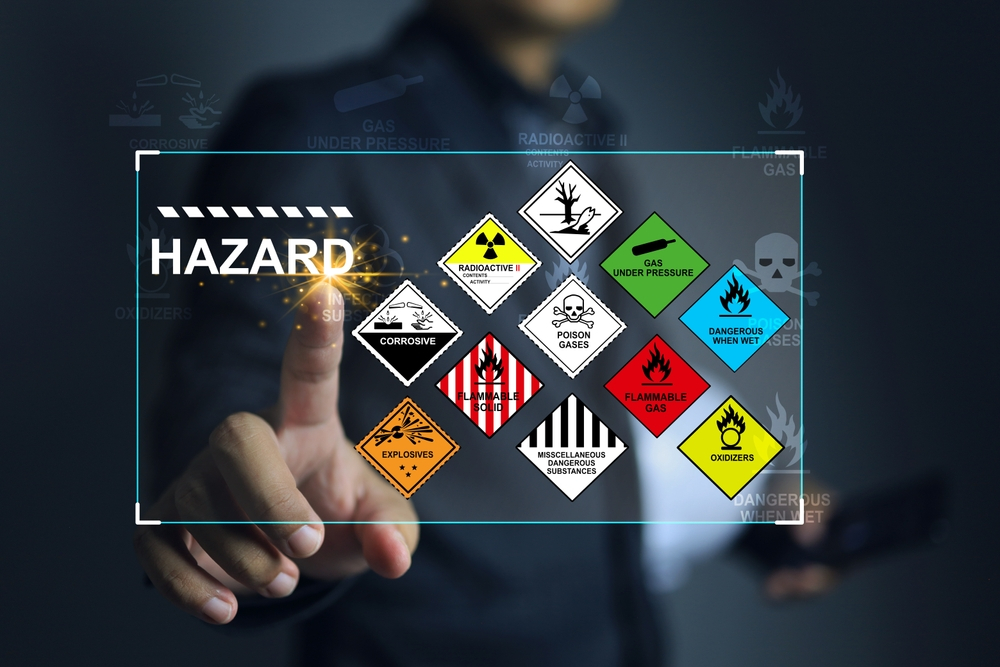About Roar Solutions
About Roar Solutions
Blog Article
The smart Trick of Roar Solutions That Nobody is Talking About
Table of ContentsSome Known Details About Roar Solutions Some Known Questions About Roar Solutions.Fascination About Roar Solutions
In order to shield installments from a prospective explosion a method of evaluating and identifying a potentially harmful area is needed. The objective of this is to ensure the proper option and installation of devices to inevitably avoid an explosion and to make sure safety and security of life.
(https://roar-solutions.jimdosite.com/)
No devices should be set up where the surface area temperature of the devices is above the ignition temperature of the offered danger. Below are some common dust hazardous and their minimal ignition temperature. Coal Dirt 380C 225C Polythene 420C (thaws) Methyl Cellulose 420C 320C Starch 460C 435C Flour 490C 340C Sugar 490C 460C Grain Dirt 510C 300C Phenolic Resin 530C > 450C Aluminium 590C > 450C PVC 700C > 450C Soot 810C 570C The probability of the threat being present in a concentration high adequate to create an ignition will certainly differ from location to location.
Hazardous area electrical devices possibly made for use in higher ambient temperature levels. Area Repair Service By Authorised Employee: Challenging screening may not be required however certain treatments might need to be adhered to in order for the devices to maintain its 3rd party score. Each item of tools with an unsafe rating ought to be examined separately.
How Roar Solutions can Save You Time, Stress, and Money.
The tools register is a thorough data source of devices records that includes a minimum set of areas to recognize each product's place, technical criteria, Ex-spouse category, age, and environmental data. This details is essential for tracking and managing the equipment successfully within unsafe locations. On the other hand, for routine or RBI sampling evaluations, the quality will certainly be a mix of Detailed and Close assessments. The proportion of Thorough to Close examinations will be figured out by the Equipment Threat, which is examined based on ignition threat (the chance of a resource of ignition versus the possibility of a combustible environment )and the hazardous location classification
( Area 0, 1, or 2). This variation will certainly also affect the resourcing requirements for job preparation. As soon as Lots are specified, you can establish sampling plans based upon the sample dimension of each Whole lot, which refers to the variety of random devices items to be checked. To determine the needed example dimension, two elements require to be evaluated: the dimension of the Whole lot and the category of assessment, which suggests the level of initiative that must be applied( minimized, normal, or raised )to the evaluation of the Whole lot. By integrating the classification of assessment with the Whole lot size, you can then develop the ideal rejection requirements for an example, meaning the permitted variety of damaged items found within that sample. For more details on this procedure, please describe the Power Institute Standards. The IEC 60079 conventional advises that the optimum period between evaluations must not go beyond 3 years. EEHA examinations will certainly also be conducted outside of RBI campaigns as part of scheduled maintenance and devices overhauls or repair services. These assessments can be attributed towards the RBI example sizes within the impacted Great deals. EEHA evaluations are performed to determine mistakes in electric equipment. A heavy scoring system is vital, as a single piece of equipment may have multiple mistakes, each with differing levels of ignition danger. If the consolidated score of both evaluations is less than two times the mistake rating, the Great deal is considered acceptable. If the Whole lot is still taken into consideration undesirable, it needs to go through a full inspection or validation, which might activate stricter examination methods. Accepted Great deal: The root causes of any kind of mistakes are determined. If a common failing mode is found, added devices may require maintenance. Mistakes are classified by intensity( Safety and security, Stability, House cleaning ), ensuring that immediate problems are analyzed and resolved immediately to reduce any kind of effect on safety or procedures. The EEHA database need to track and tape the lifecycle of faults together with the corrective activities taken. Implementing a durable Risk-Based Inspection( RBI )method is important for guaranteeing conformity and safety in handling Electrical Devices in Hazardous Locations( EEHA) (hazardous area electrical course). Automated Fault Scoring and Lifecycle Administration: Easily handle mistakes and track their lifecycle to enhance evaluation precision. The introduction of this assistance for risk-based assessment even more enhances Inspectivity's position as a best-in-class option for regulatory conformity, in addition to for any type of asset-centric inspection use instance. If you are interested in discovering more, we invite you to request a demonstration and find exactly how our remedy can change your EEHA monitoring processes.
The Facts About Roar Solutions Uncovered

In regards to eruptive danger, an unsafe location is an atmosphere in which an explosive environment exists (or may be expected to be existing) in amounts that need special precautions for the construction, installation and usage of devices. electrical refresher course. In this post we check out the challenges faced in the office, the danger control procedures, and the needed competencies to function safely
These substances can, in specific problems, form eruptive atmospheres and these can have significant and awful consequences. Most of us are acquainted with the fire triangle eliminate any kind of one of the three aspects and the fire can not take place, but what does this mean in the context of harmful areas?
In the majority of instances, we can do little concerning the levels of oxygen airborne, however we can have significant influence on resources of ignition, for instance electric equipment. Dangerous areas are recorded on the unsafe area classification drawing and are recognized on-site by the triangular "EX" sign. Right here, among various other vital information, zones are split into three types relying on the threat, the possibility and duration that an explosive environment will certainly exist; Area 0 or 20 is deemed the most harmful and Area 2 or 22 is regarded the least.
Report this page